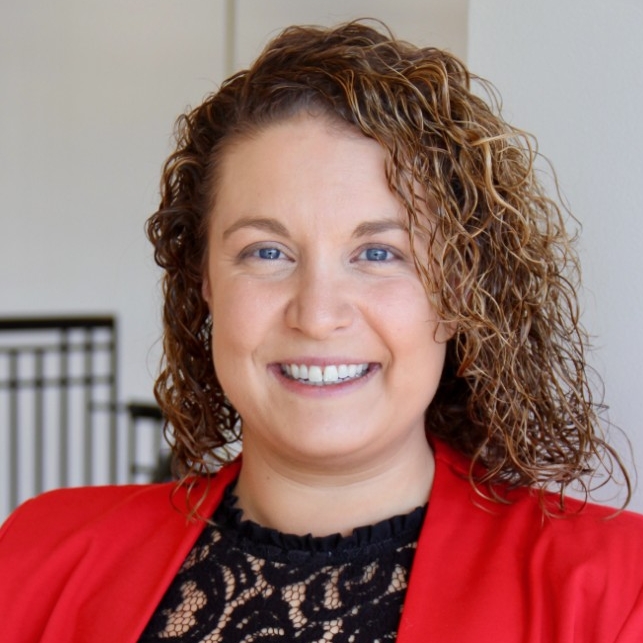
A nursing dilemma: Opioid use disorder and pain management
UC alumna Brittany Punches discusses opioid use disorder and pain management
Chronic pain is among the most prevalent and debilitating medical conditions, but also among the most controversial and complex to manage, raising a significant challenge for clinicians. How can nurses address the stigma associated with pain and opioid use and how can they play a key role in preventing and addressing the prescription opioid crisis?
In this webinar, Brittany Punches, PhD, answers these questions and discusses her research to guide nurses in understanding and addressing the complex equation of opioid use disorder and pain management.
Watch the full webinar or read the summary of key points Punches discusses below.
Some context on the opioid crisis
The War on Drugs and the “Just Say No” campaign during the crack cocaine crisis was a battle waged on morals – if you have strong morals, you just say no to drugs.
During the ’90s, the “Pain is the 5th vital sign” campaign encouraged doctors and nurses to assess patient pain as a requirement of proper care. Patient satisfaction surveys included questions on pain management and aspects of reimbursement were tied to these surveys, leading to change in prescribing habits as pharmaceutical companies aggressively promoted prescription opioids as non-addictive if used as medically prescribed.
Patients became addicted to their medication unintendedly, a concept that conflicted with the idea that drug use disorder was a moral failing. As it became clear that prescription opioids were contributing to the substance use disorder crisis, legislation and policy were put into place to control prescriptions; providers became unsure on how to manage pain and patients felt judged when asking for pain management.
The complexities of chronic pain
Pain is not the same for each individual as there are several aspects that feed into a person’s experience with pain:
- Affect: their mental health
- Trauma: physical and psychological
- Social: level of support, self-efficacy
- Gender/Culture: biological differences, coping strategies
“We have all of these complex factors that cause pain to be a multi-dimensional experience. We cannot just look at an individual and how much of an injury they had to their tissue to describe how much pain they should be feeling at that moment...” Dr. Punches says.
How can nurses prevent and address the opioid use disorder crisis?
- Stepping away from misconceptions and judgments regarding chronic pain and substance use disorder.
- Being aware of negative attitudes that can create negative consequences for patients and their access to health care, including microaggressions and discrimination.
- Having an open line of communication with patients. Explaining why you can’t prescribe opioids and what you can do help patients the most.
- Educating patients about risks and alternatives can help them learn that there are non-opioids options for pain management, making sure patients have a full picture understanding of the alternatives and how they can be beneficial.
- Understanding that patients have different levels of health literacy, as different patients are at different levels of understanding on how to manage their pain.
- Remembering that, for many lower income patients, opioids are perceived as the cheapest and most effective option. Not having the luxury of taking time off to focus on healing and their health, they look for a cheap and immediate solution so they can earn their next paycheck.
- Reaching out to the patient’s social support and working with interprofessional teams, including physical therapy, massage, cognitive behavioral therapy, and other solutions such as RICE (rest, ice, compression, elevation) and OTC medications.
Dr. Punches shares a few recommendations to help nurses advocate for their patients:
- Advocating for pain management, look at how we can help provide more alternative treatments for pain.
- Supporting harm reduction.
- Collaborating with interdisciplinary teams to support patients inside and outside of the hospital.

About Britany Punches:
Brittany Punches, PhD, RN, CEN, FAEN, an associate professor at the Ohio State College of Nursing, is a doctorally prepared nurse scientist and emergency care researcher with significant experience in emergency department clinical operations, patient perceptions of emergency care, and qualitative methods.
Punches’ clinical and scientific training focus on applying health service research to develop and test emergency care prevention interventions to address population health. Her primary focus surround disparities in pain management, substance use, and trauma recovery. Her work is funded by a NIH/NIDA K08 mentored grant encompassing development and psychometric testing of a decision-making instrument for opioid use following an emergency department visit for acute pain. Her long-term goal is to optimize emergency care psychosocial interventions to prevent and increase access to treatment.
Related Stories
Bridging creativity and commerce
July 1, 2024
At the University of Cincinnati’s Carl H. Lindner College of Business, Victoria Mrofchak stands out not just for her academic excellence but for her remarkable blend of creativity and business acumen. A fourth-year marketing major with a minor in management and fine arts, scholarships help Mrofchak shape her future at the intersection of art and commerce.
CCM students receive 16 award nominations from NATAS Ohio Valley Chapter
July 1, 2024
Students from the University of Cincinnati College-Conservatory of Music received 16 Student Production Award nominations from the Ohio Valley Chapter of the National Academy of Television Arts and Sciences (NATAS).
UC alum visits campus to teach students about footwear design
June 28, 2024
A 2011 graduate of design, UC alum Charley Hudak has seen his career trajectory go from intern to creative director for Tiger Woods' new athletic footwear brand, Sun Day Red. While he may run with the biggest cat in golf, Hudak doesn't forget his Bearcat roots and comes back each summer to teach youth about footwear design at DAAP Camps.
UC Nursing alum continues to further advocacy efforts for LGBTQ+ community
June 27, 2024
University of Cincinnati alum Cole Williams, BSN ’23, has continued to stay busy post-graduation. In addition to working at the med-surg floor at Tufts Medical Center, in Boston, he continues to make strides at Pride and Plasma, a group he founded in 2022 to advocate for revising blood and tissue donation guidelines.
Annette Echikunwoke qualifies for 2024 Paris Olympics
June 25, 2024
Former University of Cincinnati track and field standout Annette Echikunwoke has qualified for the 2024 Paris Olympic Games. She won the hammer throw event with a season-best mark of 74.68m at the U.S. Olympic Trials at Hayward Field on Sunday.
Doctor of Nursing Practice project focuses on multidisciplinary collaboration to increase ICU patient early mobility
June 24, 2024
When considering a Doctor of Nursing Practice (DNP) as the next step in their education, many nurses share concerns regarding the program’s final project. Unlike a traditional doctoral dissertation, the goal of a DNP project is to allow students to showcase their ability to translate knowledge and research into practical applications and solutions to real-world problems, impacting health care outcomes at a systems or population level.
UC College of Nursing celebrates outstanding preceptors and organizations
June 21, 2024
To celebrate and thank outstanding practitioners and partners whose commitment inspires the next generation of nurses and advanced practice nurses, the UC College of Nursing recognizes these professionals with the Outstanding Prelicensure Preceptor Award, Outstanding Graduate Preceptor Award and the Outstanding Organization Award.
Heat waves in the U.S. kill more people in their homes than anywhere else
June 20, 2024
Tasha Turner-Bickell, an associate professor in the UC College of Nursing, spoke with the Cincinnati Enquirer for a story about heat-related deaths. Many people are dying within their homes during periods of excessive heat and lack of air conditioning is a factor.
Engineering’s gender gap narrows
June 20, 2024
UC's College of Engineering and Applied Science has launched the careers of many women across engineering disciplines. With much to celebrate, women say there is still more to do to reach equity in the workplace.
Grace Hall’s journey from National Guard to nursing school
June 18, 2024
As a dedicated member of the Army National Guard while balancing classes at the University of Cincinnati, Grace Hall has navigated a challenging but rewarding path toward her ultimate goal — a nursing degree. Her journey, marked by military service and academic excellence, reflects her unwavering commitment to making a difference in the medical field.
